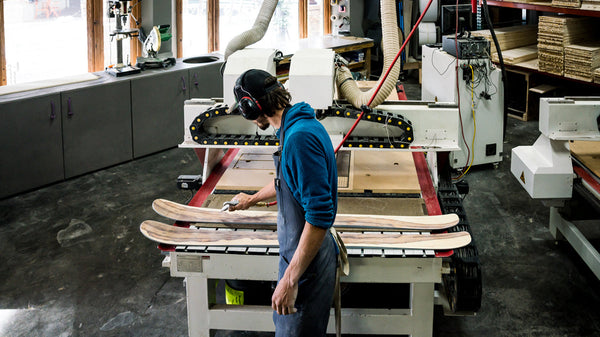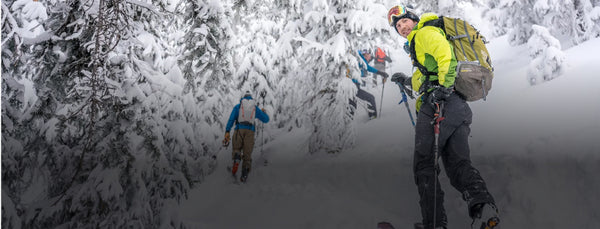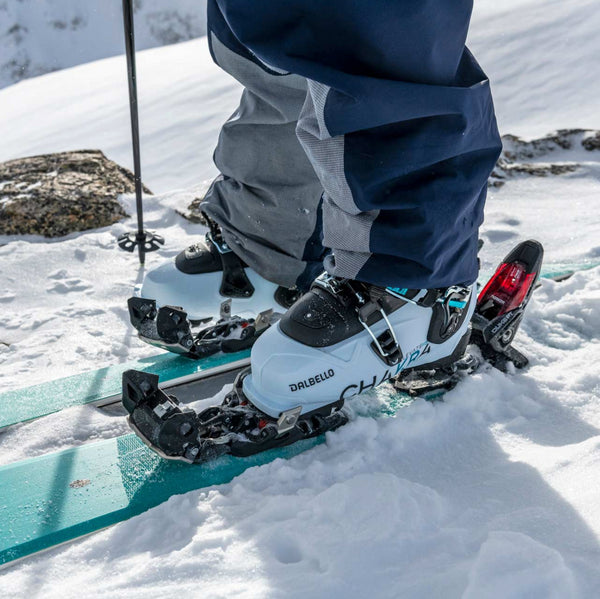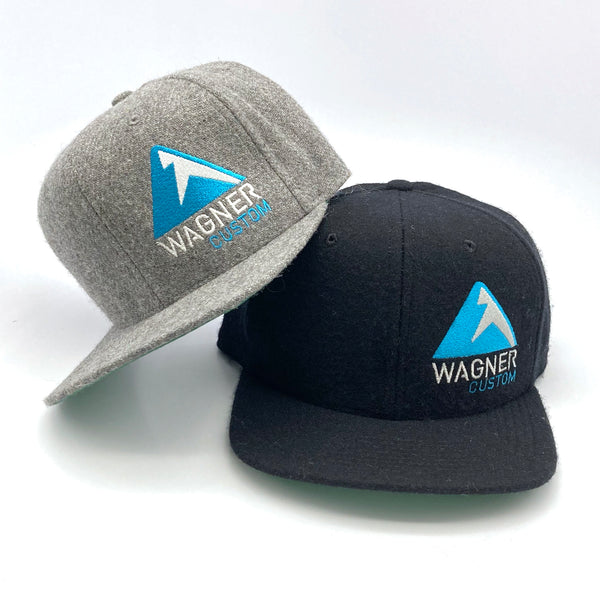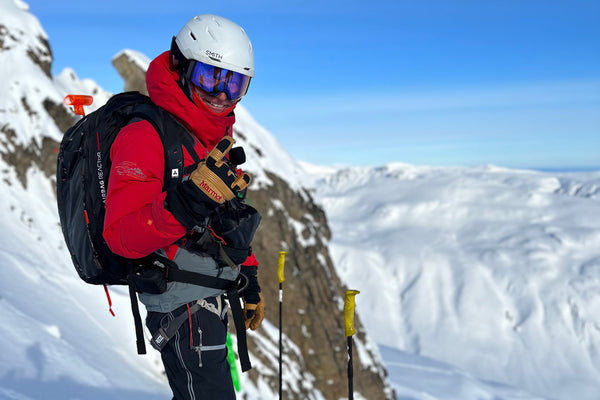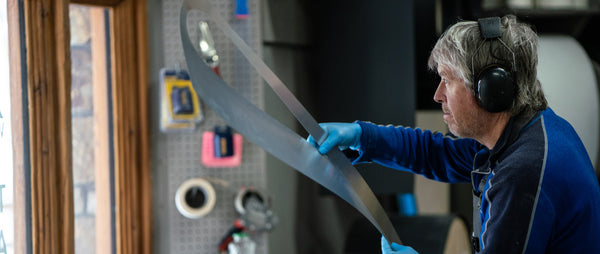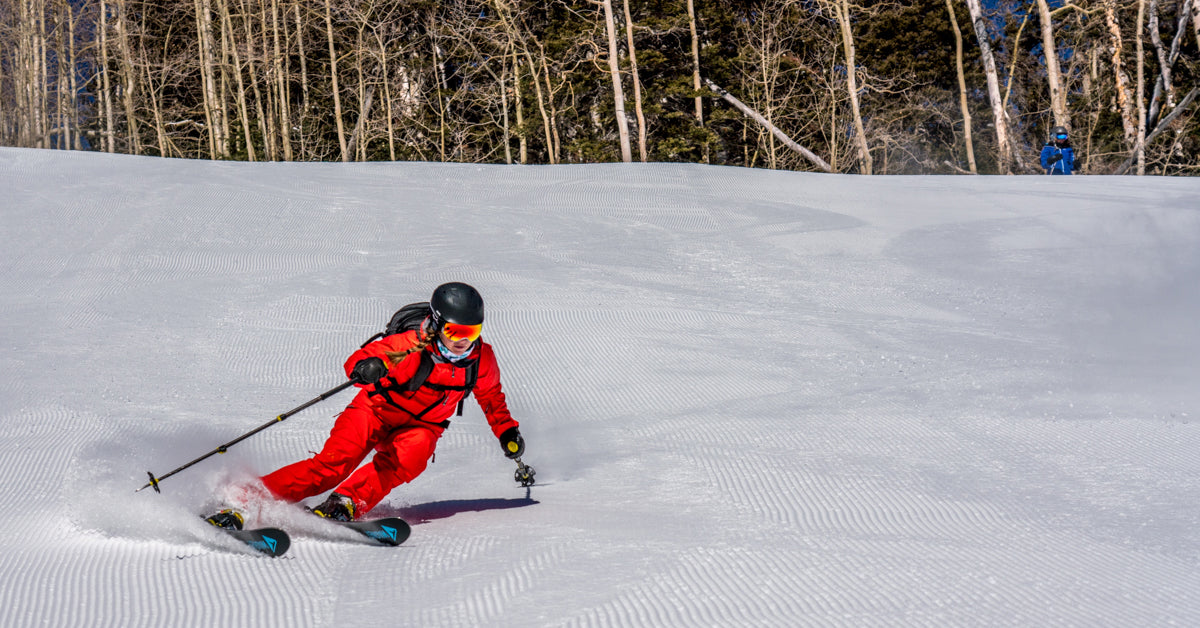
Why Tuning Matters
If you live on the East Coast, you can skip this article and move on to your next procrastination—you folks know what a sharp edge is.
But the rest of us soft-snow snobs may need a little nudge to schlep our gear to the shop or even learn how to do it on your own.

Ted Ligety on sharp skis. Check out his "Next Level Skiing" interview from 2024.
Tuning matters for many reasons, but the most important one is that it makes skiing more fun. Of course, if you only ski powder, you’ll need to tune your edges less frequently—and we’re moving to wherever it is you live. But most of us spend the majority of our ski days on harder snow, where edge-grip will help you get the most joy out of your turns. (And now that we are moving into the spring freeze/thaw cycle, hard snow happens a bit more frequently.) Think about getting served a perfectly cooked steak at a fancy restaurant and using a butter knife to eat it. Not so fun, right?
Edges have two angle measurements: the base bevel and side bevel. The base bevel is the angle from the base of the ski to the edge itself, and it lifts the edge off the snow until the ski is tilted on edge. Too little base bevel can hook up before a skier is ready (i.e. catch on a cat track) and too much can make the ski unstable as the edge won’t grab until too late in the turn. Most all-mountain skis have a base-edge bevel of 1.

The side bevel is what determines how far the edge penetrates in the snow. A higher angle is better for ice and for carving skis, and a lower angle is better for powder. Too much edge angle can make a ski feel “railed,” which means it’s difficult to get out of a turn, and too little can make a ski feel like it’s skidding around and not carving. Most all-mountain skis are tuned at 2 degrees, while narrow carvers (85 mm waists and narrower) are best tuned at 3 degrees. If you’re not sure what’s right for your skis, just ask the shop—they’ll know.
Your bases also matter, as they need frequent waxing to prevent them from drying out. Wax is to skis like moisturizer is to your skin. Wax also makes your skis glide better on the snow, which means less skating on the cat track and a smoother ride. How do you know if you need to rewax? If you can’t remember the last time you did it, you’re way overdue. Other signs are chalky-gray residue on your bases, any deep gouges and scratches, or if the snow feels sticky under your feet. Wax is temperature dependent, too, so you may need to rewax if you’re going to a different climate or for spring corn.

Dry bases that need wax (and maybe a base grind) will look white-ish.
Sometimes you’ll actually need a base grind, which is when the shop takes the ski back to being completely flat, eliminating the base edge. You’ll need this if your bases are no longer flat, if your bases no longer retain wax, if your edges are so trashed you can’t get a good edge filing anymore, or, on race skis, if the bases lose their structure (the pattern on the bottom that funnels water off the bases). You can usually base grind a ski six or so times during the course of its life.
When in doubt, ask your shop, or send your Wagners in to us for a spa tune.
--
Article by Kimberly Beekman
Kimberly Beekman is the former editor-in-chief of the late, great Skiing Magazine (RIP), and a longtime editor of SKI Magazine before that. She currently uses the title of “freelancer” as a beard to ski powder all over the world. She lives in Steamboat, Colorado, with her wonderful daughter and terrible cat.

